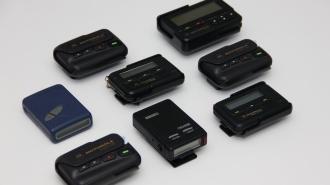In the twilight of the 1980s, pagers—a precursor to today’s ubiquitous smartphones—became a symbol of both status and scandal among teenagers.
Their increasing association with drug dealers, however, soon ensnared them in the era’s surging drug-related moral panic. This association became especially pronounced following a 1988 exposé by the Washington Post, which detailed the device’s prominence in narcotics sales, catalyzing a media frenzy with headlines like “Beepers Flourish in Drug Business” and “Drug Beepers: Paging Devices Popular with Cocaine Dealers.”
The narrative soon evolved from drug dealers use pagers to pagers symbolize drugs. Beepers were portrayed as not just a distracting teenage fad but as direct conduits to drugs. Educational leaders and lawmakers were quick to respond. James Fleming of Dade Public Schools told The New York Times: “How can we expect students to ‘just say no to drugs’ when we allow them to wear the most dominant symbol of the drug trade on their belts?”
This sentiment precipitated a slew of regulations, ranging from complete bans on students with pagers in New Jersey—which threatened severe penalties up to six months in jail for violations—to similar punitive measures across various states, including Michigan and Illinois.
Chicago’s approach was particularly stringent, with its Public Schools Security Chief, George Sims, linking pager possession among students not just to drugs but also to prostitution. The city’s crackdown led to significant numbers of school suspensions and actual arrests, reflecting a nationwide trend towards harsh punitive measures for what many saw as a direct link to drug culture. These actions, however, were not without controversy and often resulted in headline-making incidents, such as the arrest of children and even a 5-year-old’s suspension for bringing a beeper on a school trip.
Amidst this backlash, Motorola, which dominated the pager market, launched a counter-offensive in 1994. The campaign was designed to rebrand pagers as essential tools for youth communication, foreshadowing modern PR strategies by digital giants like TikTok to influence public perception and policy. Motorola’s efforts included youth-driven design think tanks and strategic partnerships, like their notable collaboration with PepsiCo to distribute low-cost pagers.
As the digital age advanced, the narrative around communication devices and youth shifted. The beeper laws, once seen as vital for protecting youth from the perils of drug trafficking, gradually became recognized as relics of a past moral panic—echoed today in the debates surrounding smartphone use in schools. Despite this evolution, echoes of the past resurface in contemporary discussions, reflecting a cyclical debate about youth, technology, and societal values.
Louis Anslow is the author Pessimists Archive newsletter, exploring society’s fears about old things when they were new. For more stories like this, you can subscribe to Pessimists Archive here.






